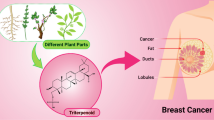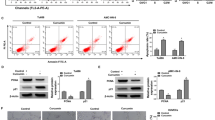Abstract
Objective: Tea polyphenols present in green tea show cancer chemopreventive effects in many tumor models. Epidemiological studies have also suggested that green tea consumption might be effective in the prevention of certain human cancers. In the present study, we investigated the molecular mechanisms of the inhibition of cell proliferation by tea polyphenols in nasopharyngeal carcinoma (NPC) cell line CNE1-LMP1. Methods: CNE1-LMP1 cells were treated with tea polyphenols at various doses (0, 25, 50, 100, 200 µg/ml) for 24 hours, the morphology of cells was observed by light microscopy, and cell survival rate was determined by MTT assay. At the same time, cell cycle of CNE1-LMP1 was analyzed by flow cytometry. Cyclin D1 transcription was analyzed by cyclin D1 promoterluciferase reporter system and expression of cyclin D1 protein by Western blot analysis. Transactivities of NF-κB and AP-1 was analyzed by Dual-fluorescence reporter gene system. Results: After treatment of CNE1-LMP1 cells with tea polyphenols, the number of proliferating cells was obviously decreased as determined by light microscopy and MTT assay (from 100% to 89.4%, 83.3%, 74.8% and 38.1%). With the increase of tea polyphenols concentrations, the number of cells in S-phase was obviously decreased, and the number of cells in G1-phase from 22.20% to 13.16%, and the number of cells in G0/G1 phase was elevated from 68.5% to 74.08%. It suggests that tea polyphenols could arrest the cell cycle at both of the two checkpoints. Furthermore, transcription and were obviously declined 7–8 folds (100–200 µg/ml tea polyphenols or EGCG group) and expression of cyclin D1 protein also decreased in a dose-dependent manner. Transactivities of NF-κB and AP-1 were obviously down-regulated in CNE1-LMP1 cells. Conclusion: Green tea polyphenols could inhibit cell proliferation, by suppressing the activity of NF-κB and AP-1, and by down-regulation of the transcription of cyclin D1.
Similar content being viewed by others
Abbreviations
- TP:
-
tea polyphenols
- EGCG:
-
(-)-epigallocatechin-3-gallate
- AP-1:
-
activator protein-1
- BSA:
-
bovine serum album
- LMP1:
-
Epstein-Barr virus latent membrane protein 1
- NF-κB:
-
nuclear factor kappa B
- DMSO:
-
dimethyl sulfoxide
- PBS:
-
phosphate buffered saline
- NPC:
-
nasopharyngeal carcinoma
- JNK:
-
c-jun-NH2-terminal kinase
References
Yang CS, Wang ZY. Tea and cancer [J]. J Natl Cancer Inst 1993; 85:1038.
Brown MD. Green tea (Camellia sinensis) extract and its possible role in the prevention of cancer[J]. Altern Med Rev; 1999; 4:5, 360.
Yang CS, Chung JY, Yang G, et al. Tea and polyphenols in cancer prevention[J]. J Nutr 2000; 130(2S Suppl): 472S.
Katiyar, S.K., and Mukhtar, H. Tea in chemoprevention of cancer: epidemiological and experimental studies[J]. Int J Oncol 1996; 8:221.
Yang GY, Wang ZY, Kin S, dt al. Characterization of early pulmonary hyper- proliferation and tumor progression and their inhibition by black tea in a 4-(methylnitrosamino-)-1-(3-pyridyl)-1-butanone-ind uced lung tumorigenesis model with A/J mice[J]. Cancer Res 1997; 57:1889.
Okabe S, Ochiai Y, Aida M, et al. Mechanistic aspects of green tea as a cancer preventive: effect of components on human stomach cancer cell lines[J]. Jpn J Cancer Res. 1999; 90:733.
Chen ZP, Schell JB, Ho CT, et al. Green tea epigallocatechin gallate shows a pronounced growth inhibitory effect on cancerous cells but not on their normal counterparts. Cancer Lett. 1998; 129:2, 173.
Austin C, Patel S, Ono K, et al. Site-specific DNA cleavage by mammalian DNA topoisomerase II induced by novel flavones and catechin derivatives[J]. Biochem J 1992; 282: 883.
Dong ZG, Ma WY, Huang C, et al. Inhibition of tumor promoter-induced activator protein-1 activation and cell transformation by tea polyphenols, (-)-epigallocatechin gallate and theaflavins[J]. Cancer Res 1997; 57:4414.
Chang JY, Huang CS, Meng XF, et al. Inhibition of activator protein 1 activity and cell growth by purified green tea and black tea polyphenols in H-ras-transformed cells: structure-activity relationship and mechanisms involved[J]. Cancer Res 1999; 59:4610.
Yu R, Jia JJ, Duh JL, et al. Activation of mitogen-activated protein kinases by green tea polyphenols: Potential signaling pathways in the regulation of antioxidant-responsive element-mediated phase II enzyme gene expression[J]. Carcinogenesis. 1997; 18: 451.
Feijun L, Xiaoling P, Huanhua GU, et al. Epstein-Barr virus LMP-1 upregulates activity of AP-1 in nasopharyngeal cell line[J]. Chin J. Biochem Mol Biol 2000; 16: 109.
Fujiki H. Two stages of cancer prevention with green tea [editorial], J Cancer Res Clin Oncol, 1999; 125:11, 589.
Mukhta H, Ahmad N. Green tea in chemoprevention of cancer[J]. Toxicol Sci 1999; 522(Suppl): 111.
Ostsuka T, Ogo T, Eto T, et al. Growth inhibition of leukemic cells by (-)- epigallocatechin gallate, the main constituent of green tea[J]. Life Sci 1998; 63: 1397.
Musgrove EA, CSL Lee, MF Buckley, et al. Cyclin D1 induction in breast cancer cells shortens G1 and is sufficient for cell arrested in G1 to complete the cell cycle[J]. Proc Natl Acad Sci USA 1994; 91: 8022.
Beijersbergen RL, R Bernards. Cell cycle regulation by the retinoblastoma family of growth inhibitory proteins[J]. Biochem Biophys Acta 1996; 1287:103–120.
Herber B, Truss M, Beato M, et al. Inducible regulatory elements in the human cyclin D1 promoter[J]. Oncogene 1994; 9: 2105.
Hinz M, krappmann D, Eichten A, et al. NF-κB function in growth control: regulation of cyclin D1 expression and G0/G1-to-S- phage transition. Mol[J]. Cell Biol 1999; 19:2690.
Shi Yin Foo, Garry P Nolan. NF—κB to the rescue: RELs, apoptosis and cellular transformation[J]. TIG 1999; 15: 229.
Karin M, Liu ZG, Zandi E. AP-1 function and regulation[J]. Curr Opin Cell Biol 1997; 9: 240.
Liljeholm S, Hughes K, Grundstrom T, et al. NF-κB only partially mediates Epstein-Barr virus latent membrane protein 1 activation of B cells[J] J Gen Virol 1998; 79: 2117.
Gupta A, Rosenberger SF, Bowden GT. Increased ROS levels contribute to elevated transcription factor and MAP kinase activities in malignantly progressed mouse keratiocyte cell lines[J]. Carcinogenesis 1999; 20: m2063.
Meyer M, Pahhl HL, Baueuerle PA. Regulation of the transcription factors NF-κB and AP-1 by redox changes[J]. Chem-Biol. Interact. 1994; 91: 91.
Salah N, Miller NJ, Paganga G, et al. Polyphenolic flavanols as scavengers of aqueous phase radicals and as chain-breaking antioxidants[J]. Arch Biochem Biophy 1995; 322: 339.
Author information
Authors and Affiliations
Corresponding author
Additional information
Foundation items: This work was supported by National Natural Science Foundation of China(No. 30000087), “973” National Key Basic Research Program of China(No. G1998051201), and the National Scientific Research Foundation for Excellent Young Scientist of China(No. 39525022).
Biography: LUO Fei-jun(1968–), doctor of medicine, assistant professor, works at Cancer Research Institute, Xiang-Ya School of Medicine, Central-South University, majors in cell biology.
Rights and permissions
About this article
Cite this article
Luo, Fj., Hu, Z., Deng, Xy. et al. Effect of tea polyphenols and EGCG on nasopharyngeal carcinoma cell proliferation and the mechanisms involved. Chin. J. Cancer Res. 13, 235–242 (2001). https://doi.org/10.1007/s11670-001-0038-4
Received:
Accepted:
Issue Date:
DOI: https://doi.org/10.1007/s11670-001-0038-4




